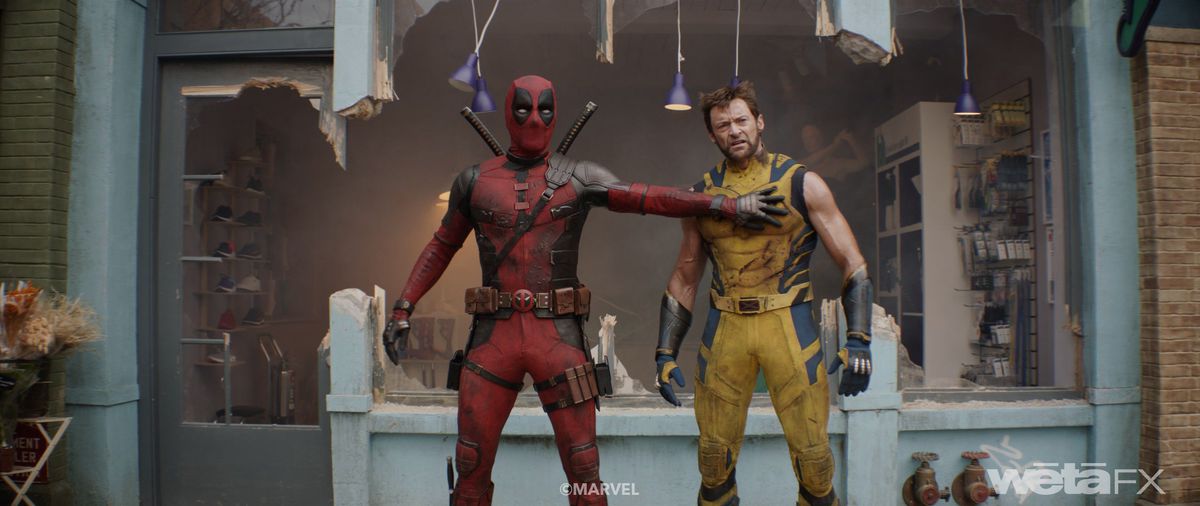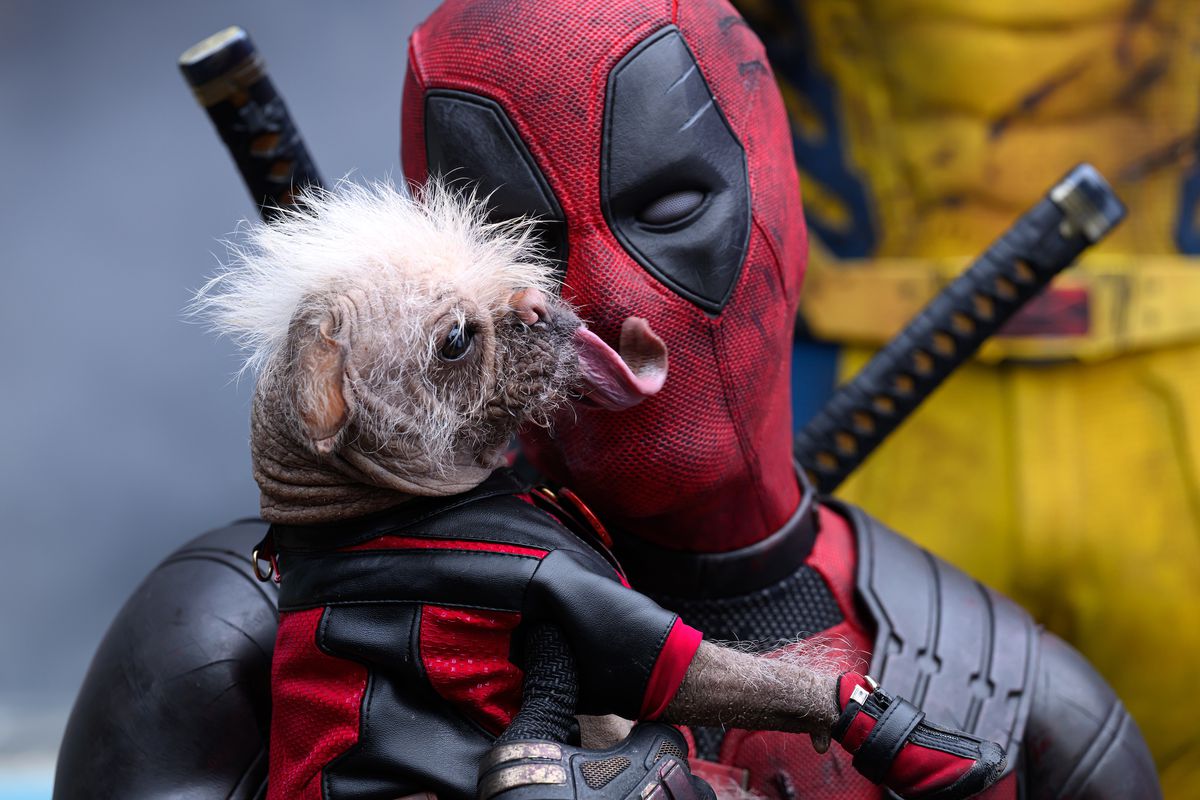Deadpool & Wolverine had a specific plan for Hugh Jackman’s corpse, until Ryan Reynolds intervened
When a representative for New Zealand-based company Wētā FX asked Polygon if it would interview someone about the company’s work on Deadpool and WolverineOne line on the project list made the answer an instant yes. Wētā, co-founded by Lord of the Rings franchise director Peter Jackson, worked on all three Deadpool films, most notably managing Deadpool’s masked facial expression. Yet the project I had the most questions about was “a digitally enhanced Wolverine corpse.” Turns out Deadpool and Wolverine Star/producer/co-writer Ryan Reynolds has strong opinions about how much skin a rotting corpse needs for comedic purposes — and to tease co-star Hugh Jackman. Wētā was there to help.
(Editorial note: Spoilers for the opening sequence of Deadpool and Wolverine — and end of 2017 Logan.)
Image: Marvel Studios/Wētā FX
The latest Deadpool movie opens with Deadpool (Reynolds) telling the audience that he’s about to desecrate the much-hyped tragic ending from the 2017 film. Loganthe film that reportedly marked both the death of Wolverine and Hugh Jackman steps down from playing the character. Deadpool needs an extra Wolverine due to multiversal antics, so he finds Logan’s grave and digs up his body, expecting him to be healed and revived, thanks to his famous healing factor.
Instead, he finds a desiccated mummy — a thin layer of rotting, dried-out skin and muscle over Wolverine’s adamantium-laced skeleton — which Deadpool uses as an improvised weapon, slaughtering an entire squad of Time Variance Authority soldiers with what’s left of Logan’s corpse.
In the version of the scene filmed by director Shawn Levy and performed by Reynolds, there was no mummy, he says. VFX Supervisor Daniel Macarin. “Originally they were going to do some sort of prosthetic dead Wolverine that he rips out of the ground,” Macarin says. “And then they thought about it, they thought, Well, if he has that much skin or organic material on his body, wouldn’t people say, ‘Why doesn’t he just heal? Why doesn’t he come back to life? Why doesn’t anything happen?’ There might be a question like, Will there be an extra scene where his eyes open and suddenly there’s a zombie Wolverine in the world?
“To get rid of that, they finally decided: Let’s make a skeleton out of it — just an adamantium skeleton. People will understand. It won’t cause any confusion. You know the skeleton won’t walk around. That’s the better idea. “That’s how they shot the scene.”

Image: Marvel Studios/Wētā FX
Macarin confirms that in the original footage, Reynolds uses an artificial skeleton as a weapon: “That prop was real. Even when he’s moving it back and forth and hitting TVA officers with it, he’s hitting them with the prop.”
But after Reynolds watched the scene on screen, he began to have doubts about how to make it funnier.
“Ryan said something like: Yeah, it works — but this is what I want to do. I want to desecrate Hugh Jackman’s body, and I really want to take it to the next level. I want Hugh to see it, and I want him to start laughing“, says Macarin.
In Macarin’s retelling, Reynolds decided there was a way to clear up all the confusion about Logan’s possible revival: “Let’s put some skin on his face (…) and when it’s time for Hugh Jackman’s credits, we’ll peel the skin off and reveal (the skull). What do you guys think? And we thought: Skin tearing. Yeah. Okay. Yeah, no, that sounds good. So we went to work with our team and we started taking Hugh’s likeness and seeing how much of it we could fit into a zombie face. (…) We talked about if we could have little dangling pieces of skin fall off and if his eye would pop out when he was punching TVA officers. There were a lot of creative conversations about what we could do with it and what would make it more or less funny at that point.”
Reynolds took a similarly hands-on approach with other aspects of the production, Macarin says, particularly around how Deadpool’s facial expressions play through his mask. One of Wētā’s effects jobs on Deadpool and Wolverine — and the previous two Deadpool films, produced by 20th Century Fox — was managing the consistent look and feel of Deadpool’s mask. While scenes for those films were shot in a practical costume version of the mask, Deadpool was digitally enhanced to make his emotions more apparent — making his eyes narrow or widen in ways a real mask couldn’t, or allowing micro-expressions like a worried brow furrow or a smirk to come through.
Macarin says Reynolds would sometimes watch footage from the film and worry that his facial expressions weren’t conveying enough emotion for the mask team to notice.
“We have such a great relationship with Ryan that we’ve had for so long,” Macarin says. “He’s very, very comfortable sending us videos on his phone, or calling us and saying, ‘Hey, I want to try this a couple different ways. This is what I did that day. Let’s try to see it faster.’ Or, ‘Let’s try this other sentence. I might want to say something different. Let me know what you think that would look like, what that would feel like.’
Macarin says that Reynolds typically relies solely on the Wētā team’s experience with his face to make these changes: “He gives us a lot of confidence. We’ve been studying his face for so many years, we have a good idea of how he might say[a newly added phrase]and how the moment works in a sort of Ryan Reynolds model.” But occasionally Reynolds would also shoot new reference footage “for very specific moments where he wants to try out a few options, or where he really has a specific idea in mind.”

Photo: Jay Maidment/Marvel Studios
A great example of this is Deadpool and Wolverine: “Every time he interacted with Dogpool.” Reynolds especially wanted to make sure that Deadpool’s emotions were clearly visible on screen when he was reunited with Dogpool (played by Peggy, aka “Britain’s Ugliest Dog“).
“That moment when Dogpool comes through the gate and Deadpool falls to his knees was really important to Ryan that people understood the love in Deadpool’s face, and his absolute happiness, and his reaction to Dogpool jumping into his arms,” Macarin says.
“And because Deadpool’s mask has this inverted V (shape), it gives him this kind of neutral, angry look, which is really cool for action scenes, but not great for those kinds of moments. So he was like, I want you to turn that V all the way up, and I want those inner brows really high. He’s just in love at that moment, and I want to feel that. And he sent us a video of (the facial expression he wanted). We all laughed, but we understood what he wanted.”
Deadpool and Wolverine is now playing in theaters.
